 "718Rogue" (562siast)
"718Rogue" (562siast)
10/12/2014 at 05:53 • Filed to: None
 0
0
 1
1
 "718Rogue" (562siast)
"718Rogue" (562siast)
10/12/2014 at 05:53 • Filed to: None |  0 0
|  1 1 |
Elon Musk Shocks The World By Unveiling His D
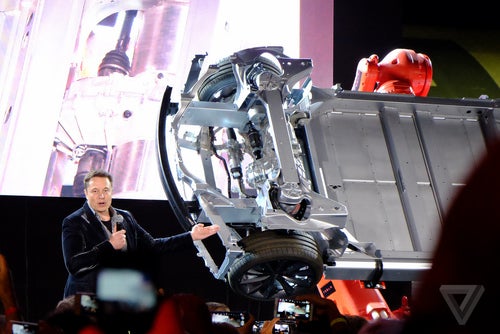
The automotive Apple. That's what some are calling fledgling independent car company Tesla, headed by the charismatic Elon Musk, equal parts brilliant and eccentric.
For those not familiar, Musk got his big-time start in PayPal, then founded the highly talked-about SpaceX, before his current main venture, Tesla Motors.
10 years ago, Tesla was nothing. They were barely a concept, and their first model, the Lotus Elise-based Roadster, was only in the prototype stages. 5 years ago, the Tesla Roadster was a niche car, a plaything of the rich, a novelty.
Today, Tesla's Model S is one of the hottest must-have items for Hollywood's finest who want to appear environmentally conscious while still flaunting their wealth. But at the same time, the Model S, with an extremely reasonable price for its technology, has began creeping into the reach of the regular person, and its unprecedented capability and practicality mean that it is actually entirely plausible for a one-car household to choose a Model S. With a base price of "only" $69,900, the type of people who buy the BMW 5 series, Mercedes E class, and Audi blank-6 (A6, S6, RS6) midsize luxury sedans are seriously cross-shopping the Model S, which, with a 200-mile-plus range and a competitively comfortable interior, and the advantage of never having to fill up, has few disadvantages to its competition.
What Musk has accomplished then, in a short decade, is nothing short of astounding, especially considering rival Fisker's recent demise. Starting a new car company is perhaps one of the hardest business ventures, and Musk seems like he can do no wrong.
But today, I'm here to tell you about Musk's new D.
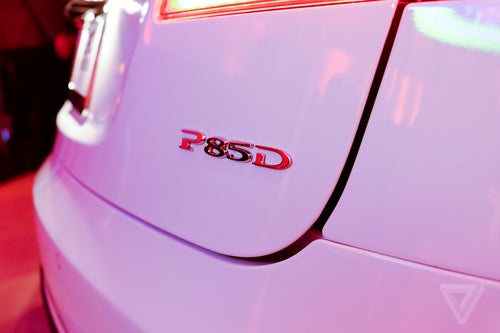
On the evening of October 9th, 2014, in a public release near LAX, Musk revealed the next generation of Model S, including the 691 horsepower P85D. The automobile looks almost identical to the current Model S in appearance, but under the skin, it boasts significant upgrades and new features.
The D stands for dual-motor, which not only increases power and weight (the top-of-the-line P85D weighs in at 4,936 pounds), but also balances the weight distribution to 50:50 (important for balanced, predictable driving dynamics), allows 1g of maximum acceleration, and on the less powerful 85D and 60D, increase range.
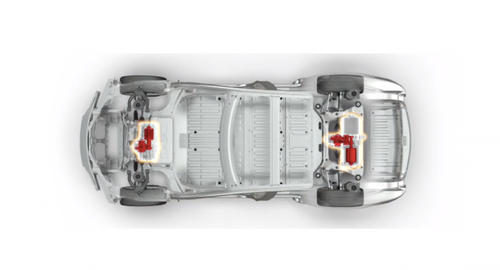
I have driven a few electric cars - Chevy Spark electric, BMW i3, Tesla Roadster - and, although my heart still lies with the rumble and melodic symphony of an internal combustion engine, it is hard not to love the instant torque and seemingly limitless acceleration that can only come from an electric motor. The P85D's performance numbers are unheard of, especially for an all-electric production car, and I can only imagine how it feels to floor it.
The second motor, placed between the car's front wheels, also means that the Model S is now all-wheel-drive, as opposed to the last generation which was rear-wheel-drive only.
Besides the power and range increases, just how important is the new twin-engine Tesla?
Well, two electric motors is vastly different from an all-wheel-drive gas-powered car. Linking all four wheels in a traditional car involves a transfer case, significant additional weight and complication through an additional driveshaft, and limits the amount of power that can be directed towards either end and the degree of change and control over the wheels. An electric drive system, on the other hand, can be controlled to a much finer degree, and the D's will be able to vector torque to individual wheels instantaneously, giving perfect car control and increasing roadholding performance - part of the reason for the amazing 1g acceleration figure.
Even more importantly for Tesla, all-wheel-drive will enhance the Model S's poor weather performance, and make them much more competitive with all-wheel-drive models from BMW, Mercedes, and Audi in snowy climates, especially the hugely populated Northeast U.S.
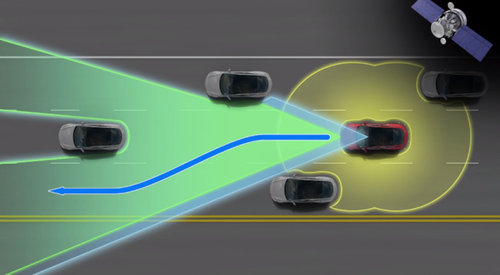
But the new drivetrain is not the only breakthrough feature to come with the next-generation Model S. Similarly revolutionary is the autopilot feature Tesla has developed. Although Musk stated that Tesla is still five to six years away from a true self-driving car, which would not be road legal anyway, the new Model S is equipped with a sophisticated array of sensors designed to keep the driver more aware of his surroundings and can even take limited control to avoid crashes.
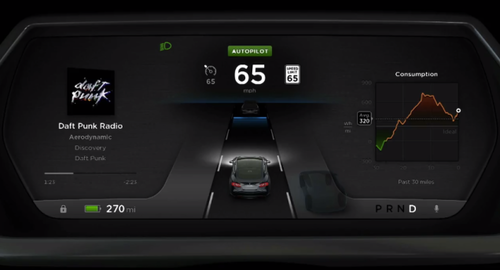
What's new about Tesla's system is that they have integrated features which are designed to make the car identify lane markings, traffic signs, and pedestrians, avoid collisions at all costs including emergency braking, and use real-time data to determine speed limits and traffic conditions. While it is not yet true autopilot, it is an unprecedented degree of driver assistance and automatic control.
With a relatively little prior hype, and no visual change, the new Model S may not seem particularly impressive. However, Tesla should be anything but overlooked. Love them or hate them, the company that has seemingly accomplished the impossible demands respect, and has gone from a pipe dream to a serious driving force behind automotive evolution and innovation, making significant revolutions in both safety and performance. Whether you welcome or fear an automated, machine-controlled future, it seems that we are getting closer and closer to that reality.
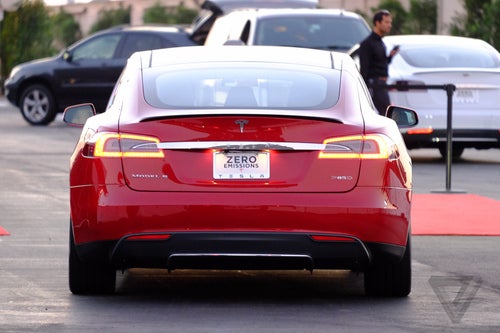
!!! UNKNOWN CONTENT TYPE !!!
 Zipppy, Mazdurp builder, Probeski owner and former ricerboy
> 718Rogue
Zipppy, Mazdurp builder, Probeski owner and former ricerboy
> 718Rogue
10/12/2014 at 05:59 |
|
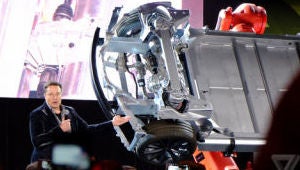
Uhh, yeah, this is my "D", guys.